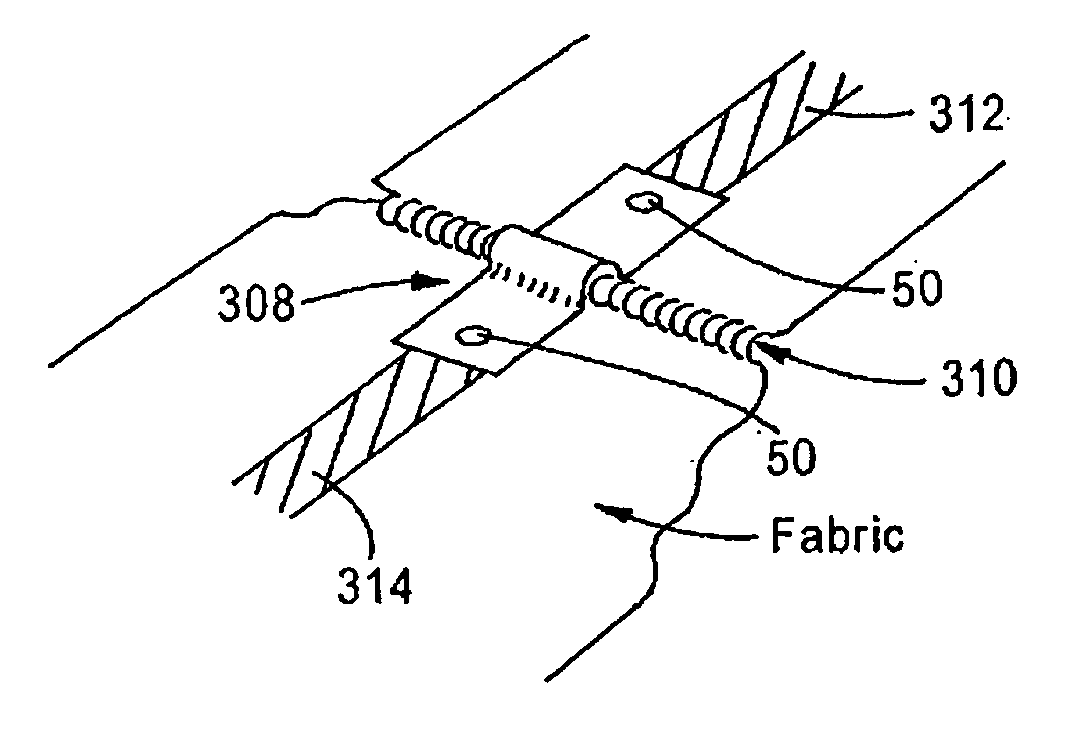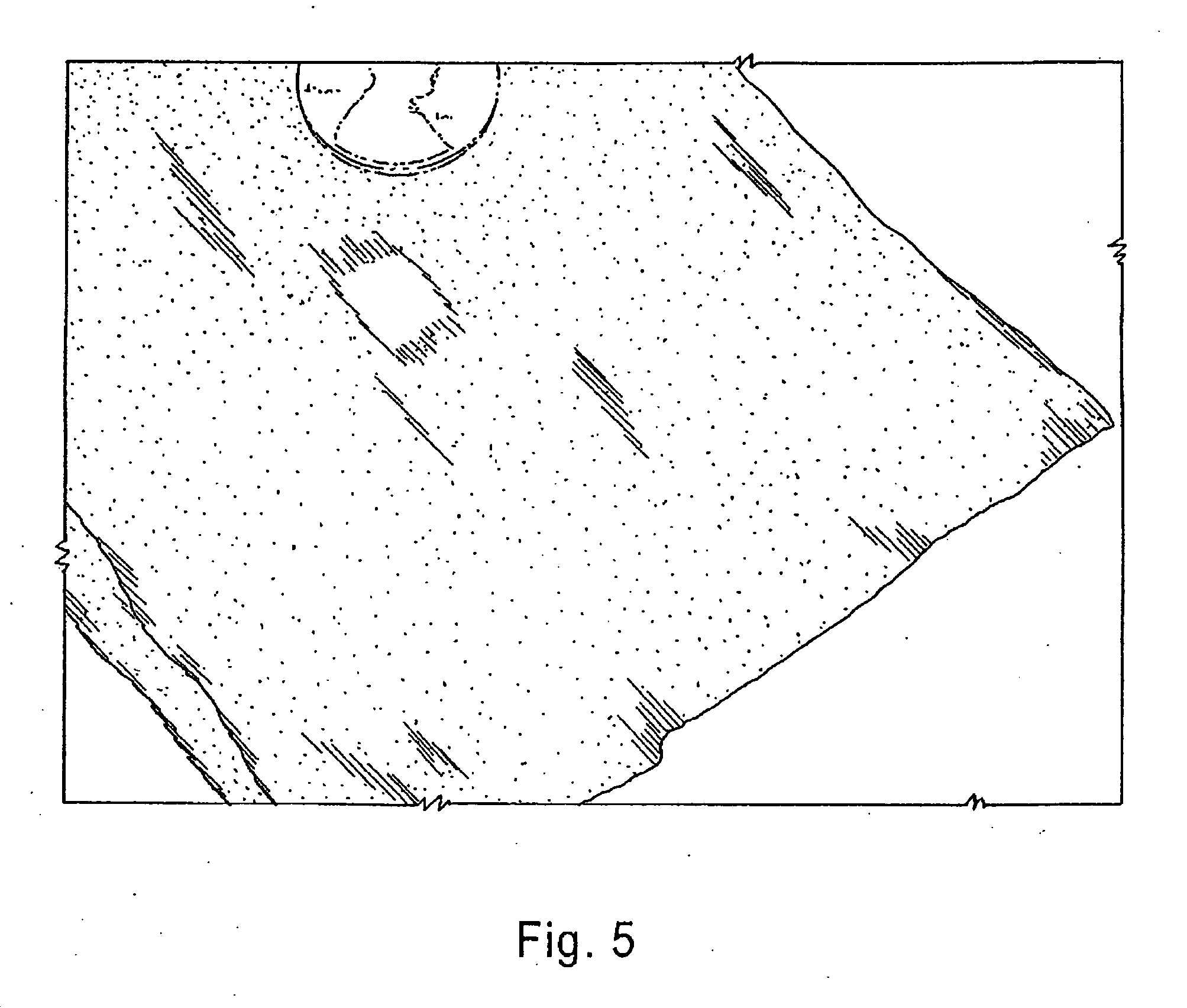Electrically conductive fabric jumpers
- Summary
- Abstract
- Description
- Claims
- Application Information
AI Technical Summary
Problems solved by technology
Method used
Image
Examples
Embodiment Construction
[0026]There exists in the prior art, a process called “heat staking”. This requires a special machine, which applies heat and pressure at the same time to bond two pieces of material together. The materials can be dissimilar.
[0027]The present invention utilizes the heat staking process in a configuration to join two conductive yarn traces 10, 12 (see FIGS. 1(a)-(f)) or pads by piercing them with a thermo plastic stud 20 (FIGS. 1(a)-(c)) shaped somewhat like a rivet with a pointed post 22 to pierce the fabrics 10, 12 (FIG. 1). Although the post 22 is shown as pointed, it can be any desired shape. The stud 20 also has a cylindrical post 22 and a head 24. Although shown with a cylindrical post 22 and round head 24, these heads and posts can be any shape that can be “heat staked”. The stud 20 can have one or more posts 22 (FIG. 4). One post 22 is shown for simplicity. A properly designed tool 100 (FIG. 2 shows a typical tool) will then be lowered to meet the pointed tip and using the pr...
PUM
| Property | Measurement | Unit |
|---|---|---|
| Mechanical strength | aaaaa | aaaaa |
| Electrical conductivity | aaaaa | aaaaa |
| Electrical conductor | aaaaa | aaaaa |
Abstract
Description
Claims
Application Information
 Login to View More
Login to View More - R&D
- Intellectual Property
- Life Sciences
- Materials
- Tech Scout
- Unparalleled Data Quality
- Higher Quality Content
- 60% Fewer Hallucinations
Browse by: Latest US Patents, China's latest patents, Technical Efficacy Thesaurus, Application Domain, Technology Topic, Popular Technical Reports.
© 2025 PatSnap. All rights reserved.Legal|Privacy policy|Modern Slavery Act Transparency Statement|Sitemap|About US| Contact US: help@patsnap.com



